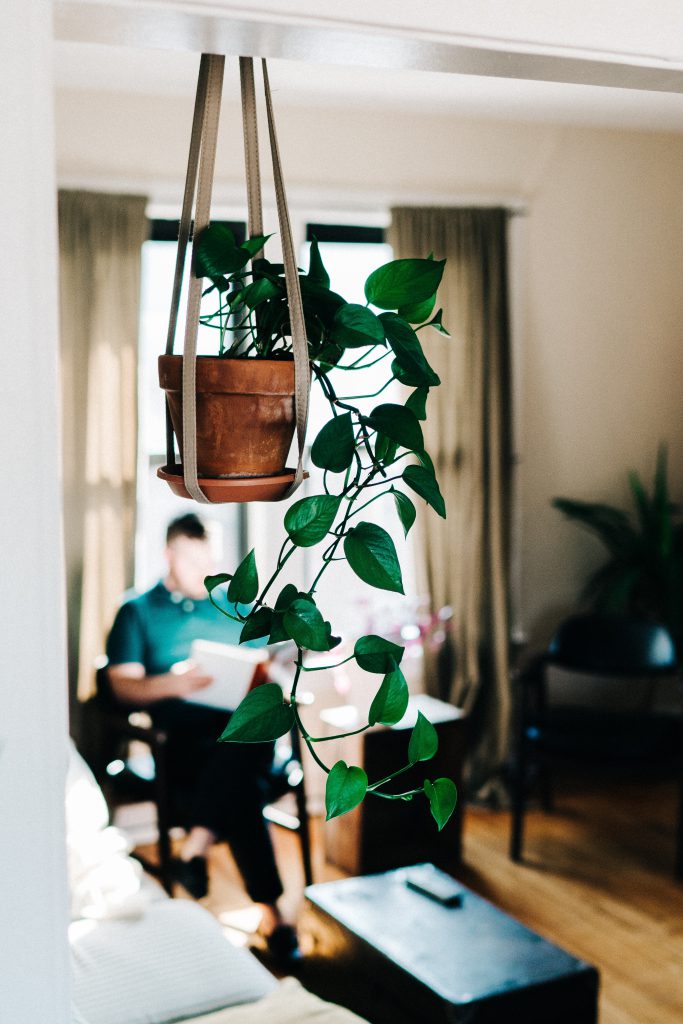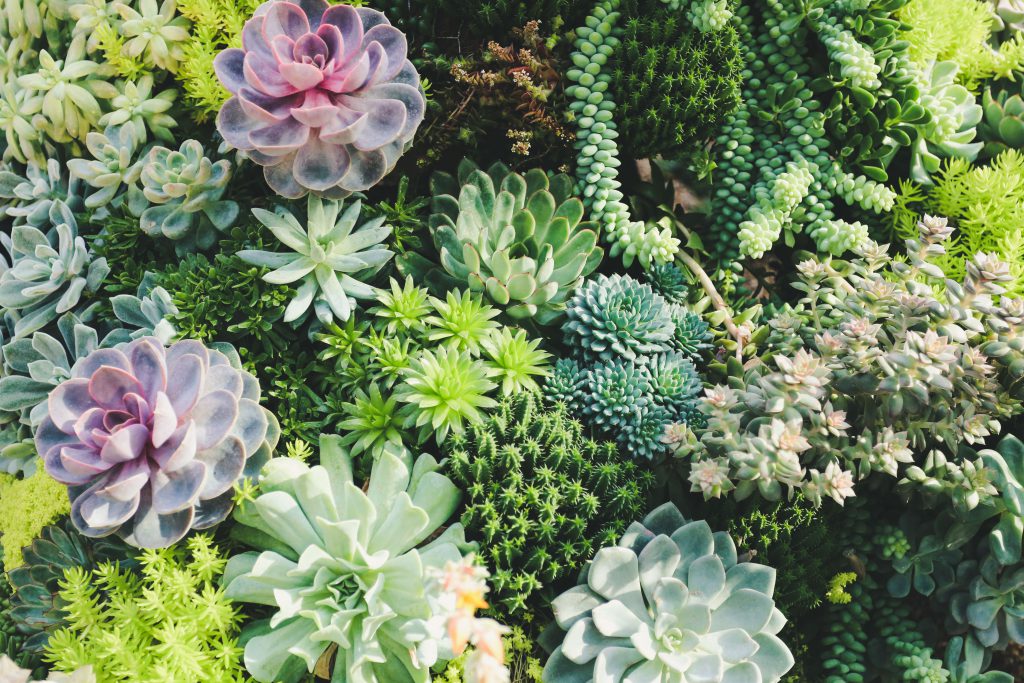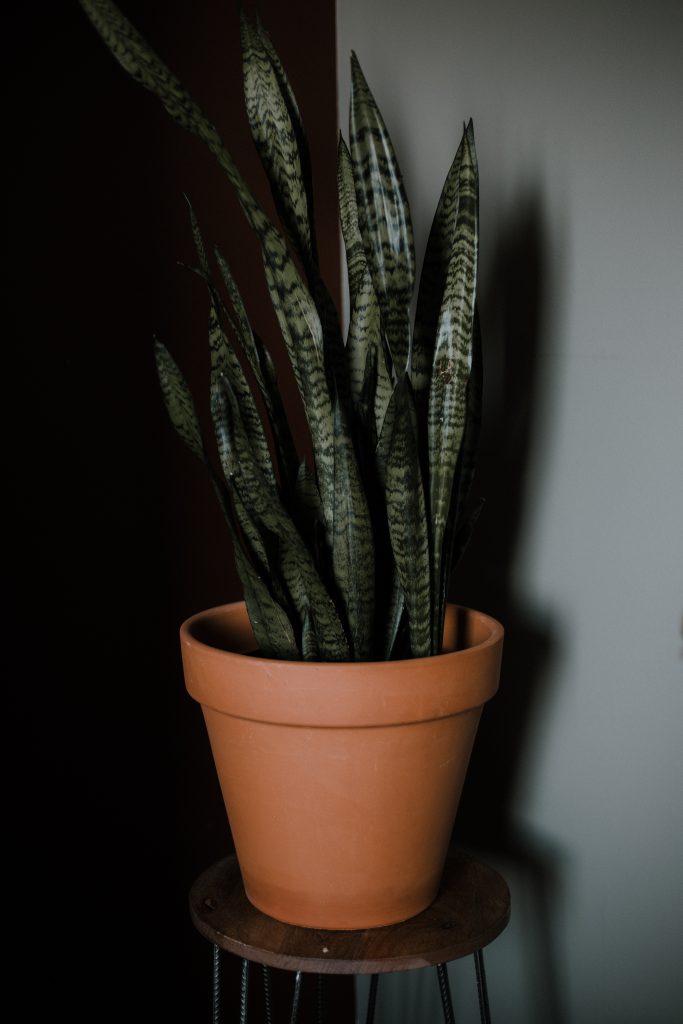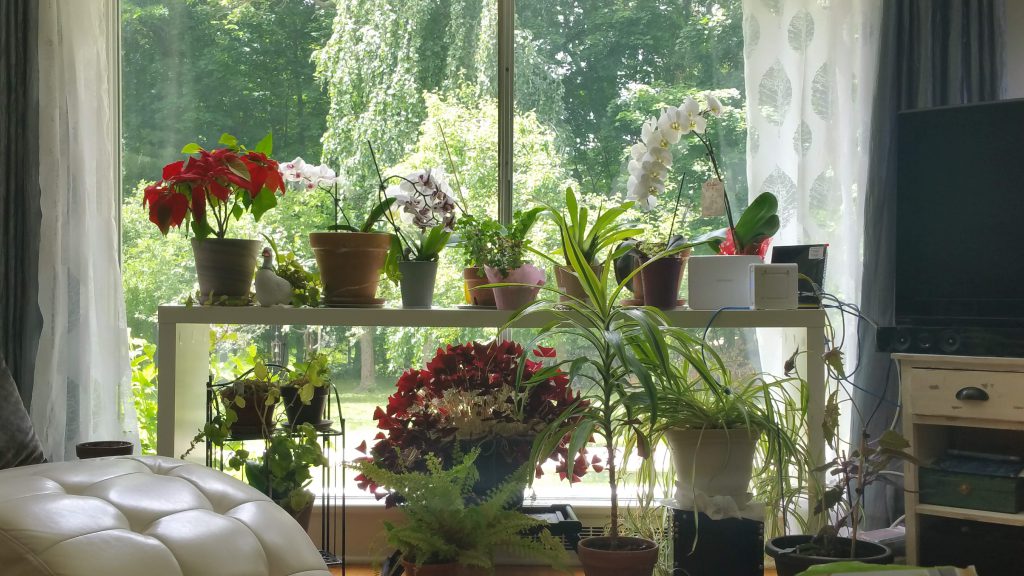 This is a guest post by Adrianna Kamosa
This is a guest post by Adrianna Kamosa
Being in nature is proven to improve your mood. Scientific studies have shown that if you venture out into nature every day you are bound to be a happier person. Exploring parks, beaches, and outdoor spaces are wonderful when you are able to be outside for extended periods of time, but what if that isn’t always an option because of chronic illness?
If you have chronic illnesses, such as Lupus, Rheumatoid arthritis or Multiple Sclerosis that cause you to limit your sunlight exposure or time being outdoors, there is a small simple solution – bring the nature indoors with houseplants.
Having houseplants is not the same as going on a walk along the beach or hiking in the forest, but those plants and flowers in the windowsill will brighten your day in those times when you feel too tired to walk or can’t be in the direct sun.
How do plants boost your happiness and health?
Plants are proven to be good for your overall health. Looking back into elementary school science class basics, without plants on earth, we would not be living. According to Encyclopaedia Britannica, “During photosynthesis in green plants, light energy is captured and used to convert water, carbon dioxide, and minerals into oxygen and energy-rich organic compounds.” Plants are our natural air filters, which are especially great for stale indoor air. Research by NASA revealed that houseplants can remove up to 87 percent of air toxins in 24 hours.

Photo by Mike Marquez on Unsplash
Not only are plants scientifically great at cleansing the air around us, they are also natural mood boosters. Doing the small everyday acts of caring for plants, such as watering them, putting them in the best sunlight, getting your hands in the new soil and pruning their leaves gives a wonderful sense of satisfaction.
According to a study from Texas Agriculture & Medicine University, people who spend their time caring for nature are more likely to care for others. So basically caring for plants make us more caring people!
Keeping plants around can also improve memory and concentration. According to a study, plants help with better quality and accuracy in your work; they help improve memory retention by 20 percent, they increase creativity by 45 percent and they boosted productivity by 38 percent. Therefore having plants around is especially good if you work from home or need to focus on various projects.
Now, let’s talk plants
Some plants need lots of sunshine and water, while others need limited amounts of either. You can find most of these plants at your local hardware or garden store such as Lowes or Home Depot, or specialty garden shops. Often time’s grocery stores also carry different houseplants. Feel free to ask the garden or plant-space associate more about specific plants. There are also many online spaces and pages that speak in depth about the maintenance and ideal environments for certain houseplants. Below are a few examples of houseplants to start out with, especially if you don’t have a green thumb and are new to the plant world.
Succulents
Succulents can vary in shape, size, and color. Some have flowers while others are various shades of green. Succulents are sure to add an interesting texture to a space compared to other plants. Succulents originated in very dry climates; therefore most times they fare well without being watered often. Just be sure to put them in pots with good drainage (holes in the bottom of the pot) and place them somewhere they can get lots of sunshine.

Photo by Yen Vu on Unsplash
Snake plant
This plant is one of the best houseplants and best air purifiers. It has a reputation for being long-lasting and “un-killable.” The important element to note is to not overwater it! Give it more water only if the soil is dry. According to Greenery NYC, snake plants are known to survive in dimly lit areas or spaces where people like to turn up the AC. The roots of this plant are thick and tubular, making them able hold on to water for extended periods of time.

Photo by Priscilla Du Preez on Unsplash
ZZ plant
This plant is accustomed to long periods of drought, following with bursts of generous rain. The ZZ (Zamioculcas zamiifolia) is a semi-succulent native to the semi-arid regions of Eastern Africa, according to Greenery NYC. This is a great plant for those who occasionally forget to water their plants. Indirect bright light is ideal for the ZZ plant, but it can survive most types of lighted areas. The ZZ plant has an intricate rhizomous root system, which holds as much water as it can absorb. These plants leaves are also thick and shiny; every so often dust off the leaves off gently, so that the ZZ can absorb light more efficiently. Do not continue to water the ZZ plant if the soil is still wet from a previous watering.

ZZ plant, photo by Adam Besheer
A few other good houseplants to start out with are the bird of paradise plant, Monstera deliciosa (Swiss cheese plant), Aglaonema Silver Bay or cacti. Make sure to do your research on how much to water each plant, its ideal sunlight location and what sort of soil it thrives best in.
Adding houseplants to different rooms in your house will add many benefits to your mental health and happiness, not to mention they are a fun pop of color. For most people plants are not harmful, other than a few plants that may cause allergies. Another important note is if you have children or pets, having certain plants may be toxic to them. Be sure to check with your doctor or veterinarian first before purchasing certain plants, to take safety precautions towards allergies or toxins.
 If you have any favorite houseplants that have thrived in your care, let us know your tips and tricks in the comments below! And check out this picture of our founder’s “plant wall” in her living room – lots of clean air in that space!
If you have any favorite houseplants that have thrived in your care, let us know your tips and tricks in the comments below! And check out this picture of our founder’s “plant wall” in her living room – lots of clean air in that space!
 Adrianna is a writer, artist, and marketer living in Virginia Beach. She enjoys spending quality time with family, with her pets, and in nature.
Adrianna is a writer, artist, and marketer living in Virginia Beach. She enjoys spending quality time with family, with her pets, and in nature.

I have a snake plant in my bedroom and although I can’t notice the difference, it just looks beautiful 🙂